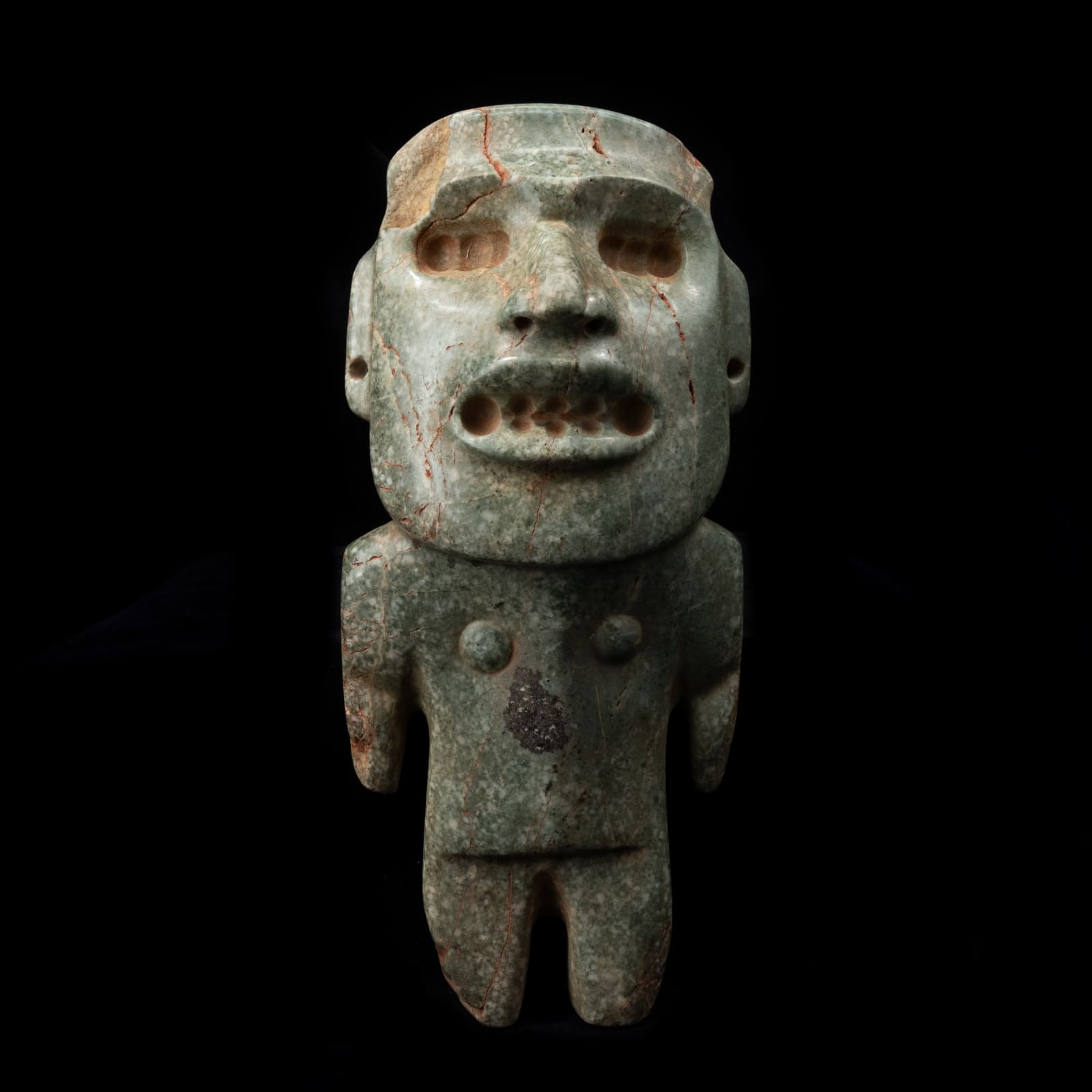Teotihuacan Stone Idol, 200 CE - 600 CE
26 x 12.5 cm
10 1/4 x 4 7/8 in
10 1/4 x 4 7/8 in
ES.4213
Further images
An exceptional example of Teotihuacan Stone Idol finely carved in Greenstone. This artefact represents fully the basic canons of Teotihuacan iconography, with a schematic representation of the human body topped...
An exceptional example of Teotihuacan Stone Idol finely carved in Greenstone. This artefact represents fully the basic canons of Teotihuacan iconography, with a schematic representation of the human body topped by an oversized head. The abdomen is realised in mild relief over the plan of the sort legs and it assumes triangular shape, border by two small circular breasts. The nose is finely carved with lateral protuberances matched by two small holes. The mouth and eyes preserve cavities which were probably decorated with shells or beads.
Teotihuacan is referred to as the city of the gods. By 600 A.D. it was the sixth largest city in the world. Situated in a temperate, fertile basin its fame spread as quickly as its prosperity, with well-established trade routes and a culture that is still impressive today. A booming economy gave rise to an urban elite that in turn fostered intellectual activity, monumental building and the belief Teotihuacan was where the cosmos and the present cycle of life began. The concept of monumentality can apply not only to great architectural structures such as the Pyramid of the Sun, but also to much smaller objects which have an intensity that makes them larger than life. Although the great civilization of Teotihuacan met its untimely end around 700 A.D., by the hand of invaders, the creative spirit of the people lives on in their enduring artist creations and spectacular ruins.
Teotihuacan is referred to as the city of the gods. By 600 A.D. it was the sixth largest city in the world. Situated in a temperate, fertile basin its fame spread as quickly as its prosperity, with well-established trade routes and a culture that is still impressive today. A booming economy gave rise to an urban elite that in turn fostered intellectual activity, monumental building and the belief Teotihuacan was where the cosmos and the present cycle of life began. The concept of monumentality can apply not only to great architectural structures such as the Pyramid of the Sun, but also to much smaller objects which have an intensity that makes them larger than life. Although the great civilization of Teotihuacan met its untimely end around 700 A.D., by the hand of invaders, the creative spirit of the people lives on in their enduring artist creations and spectacular ruins.











